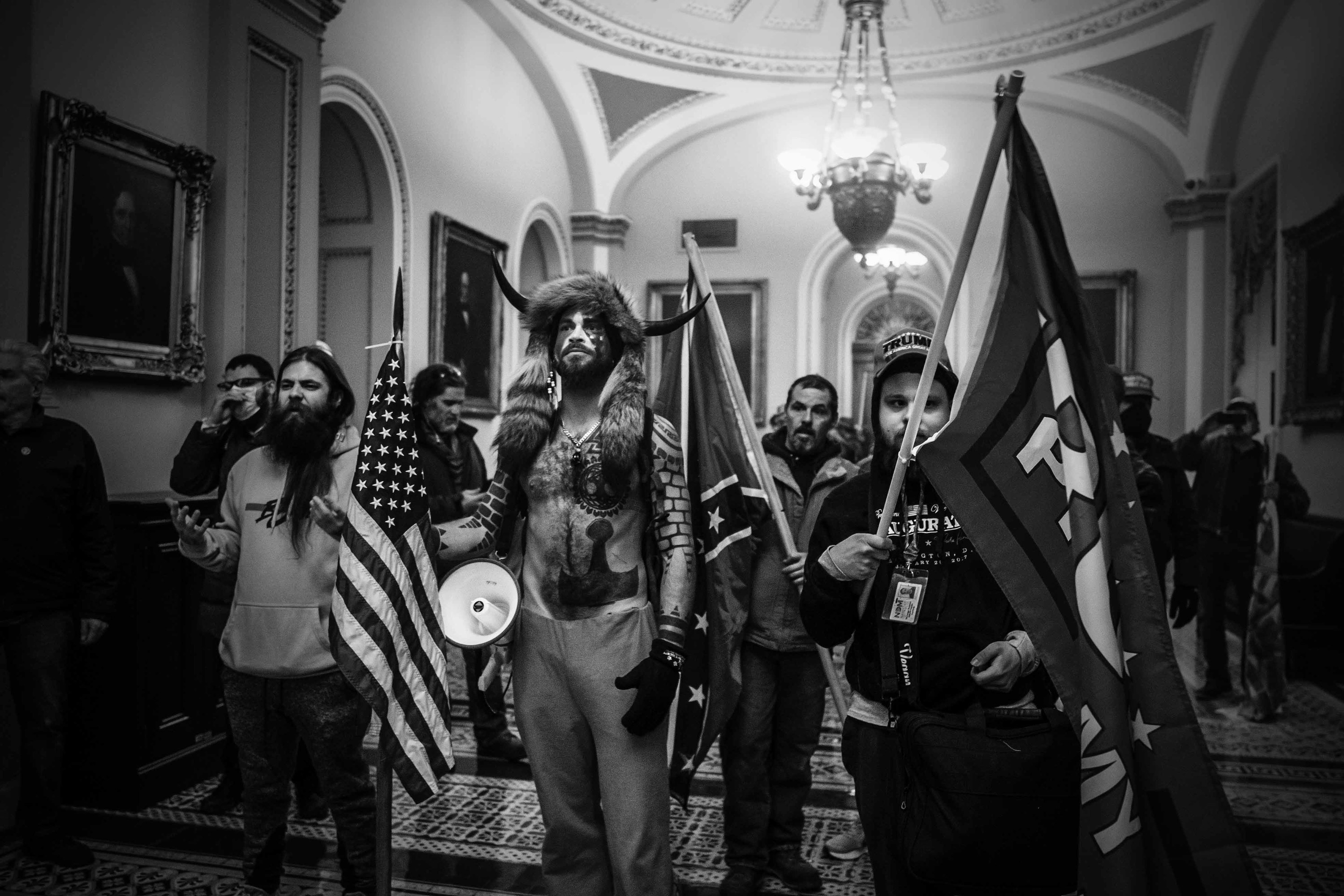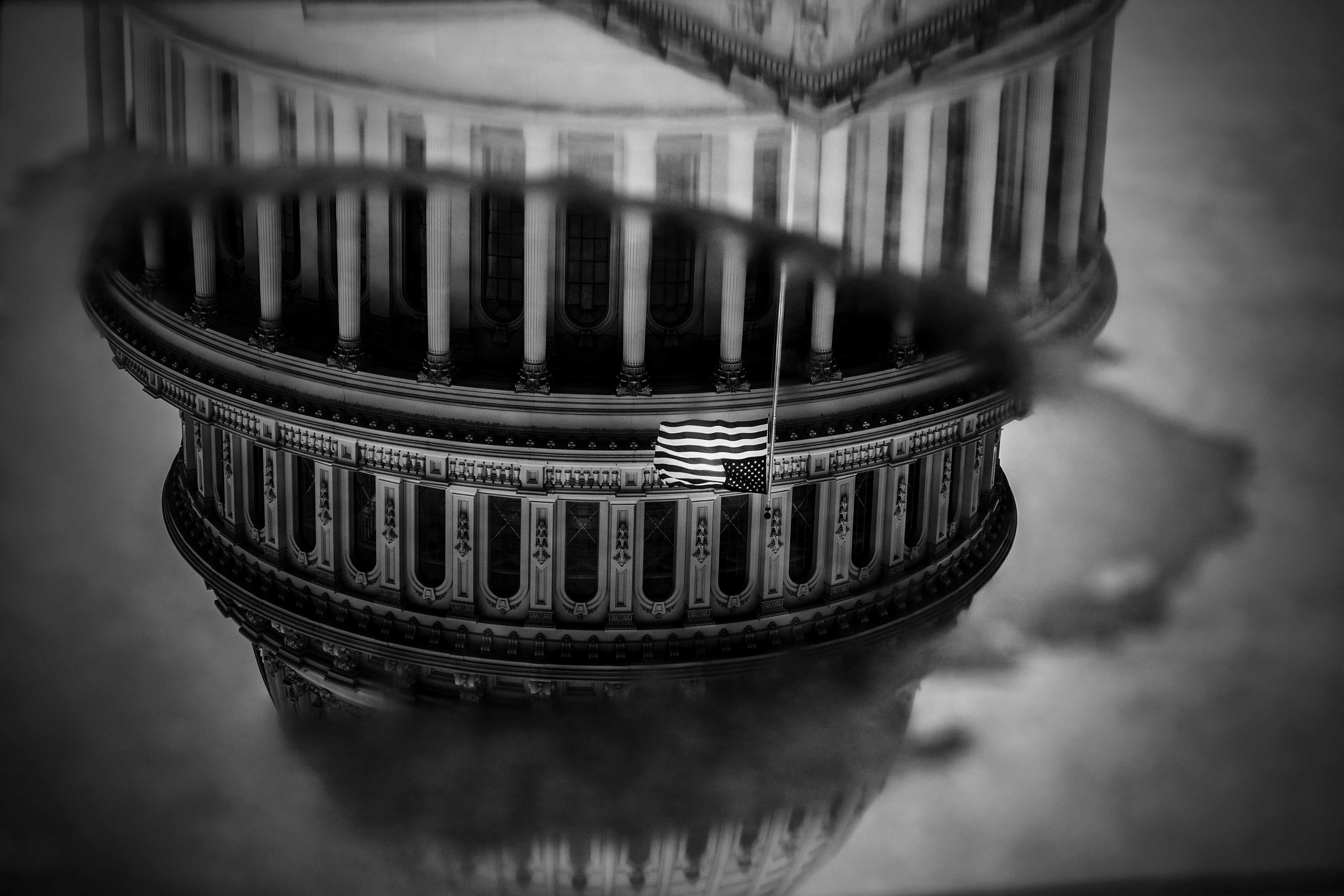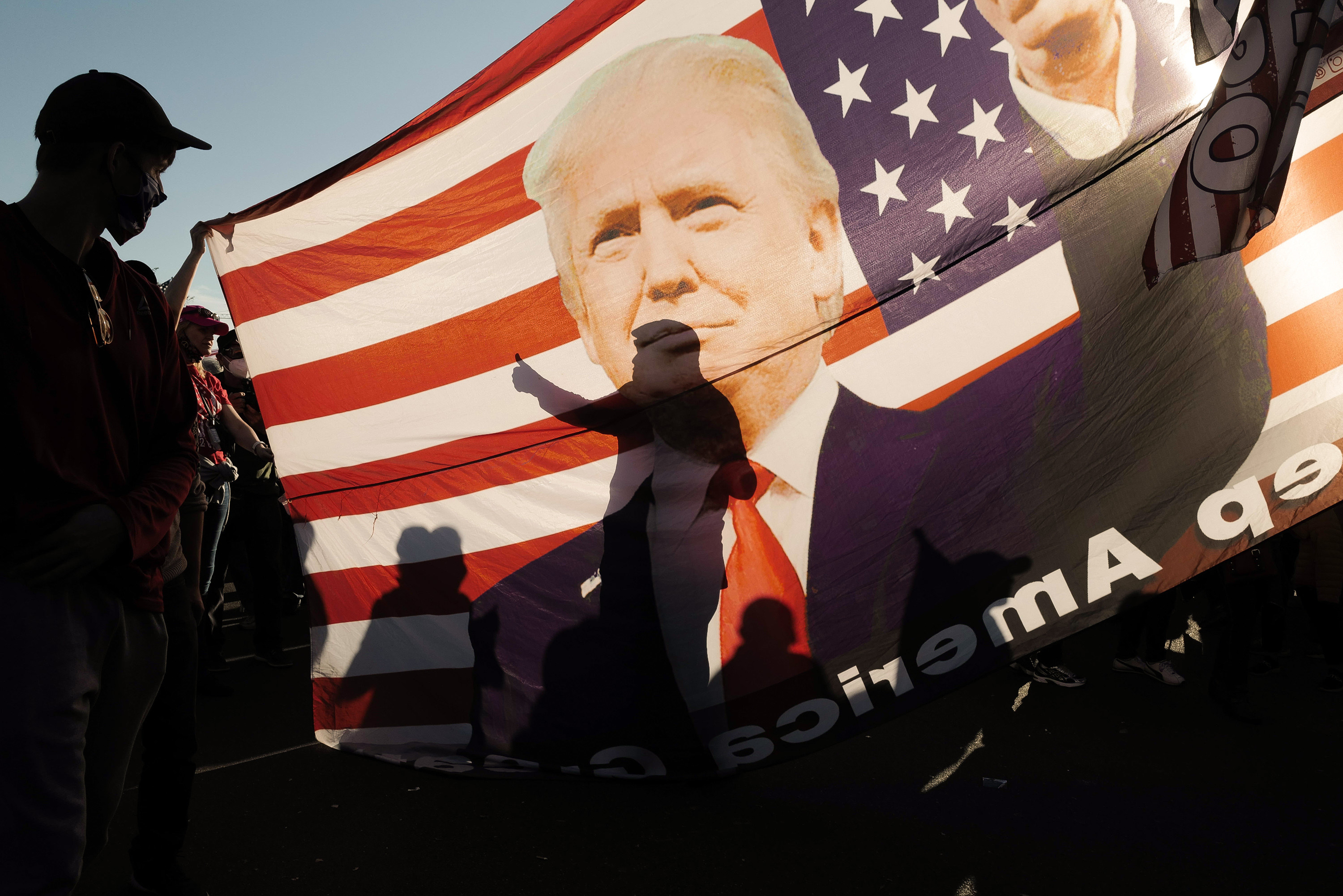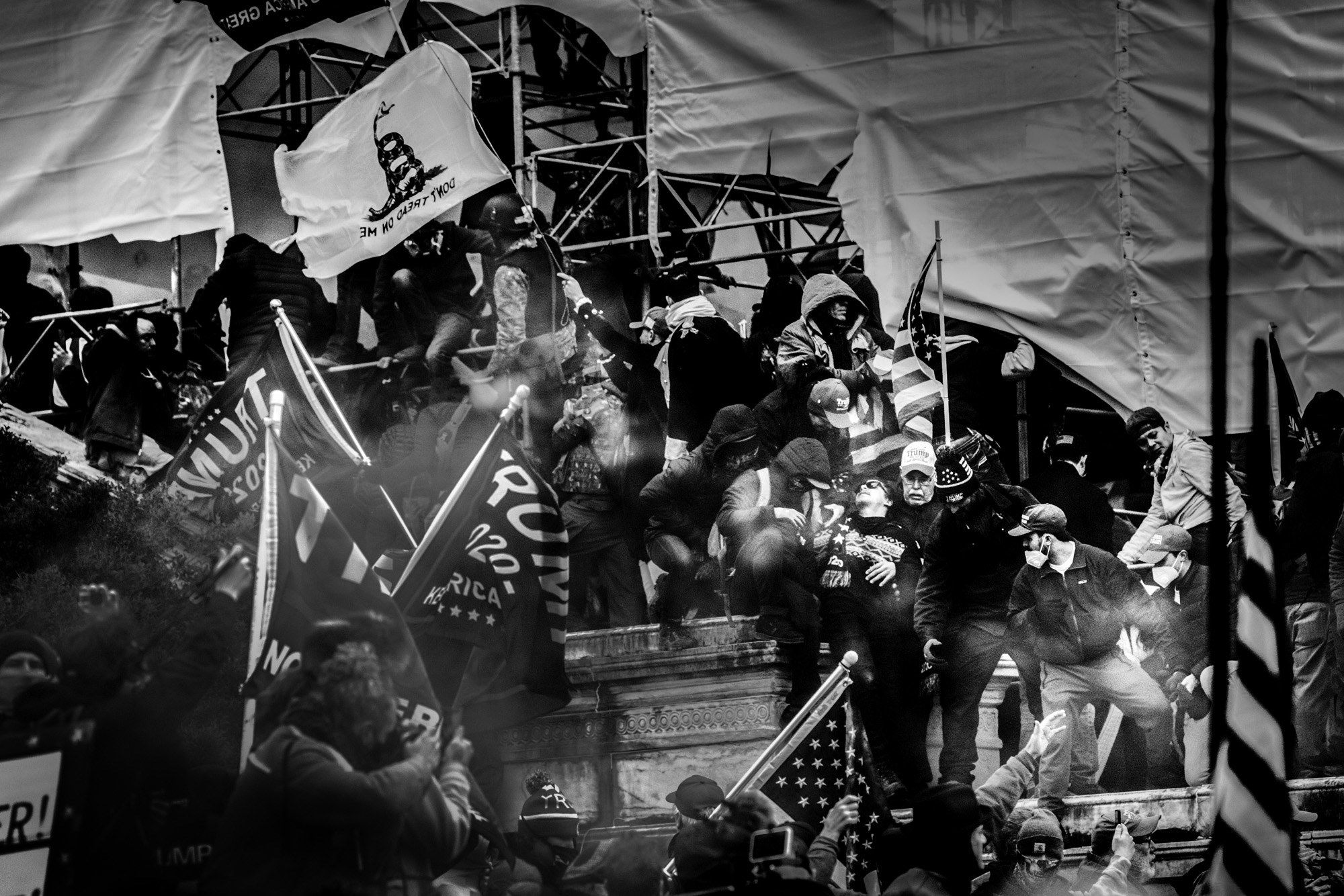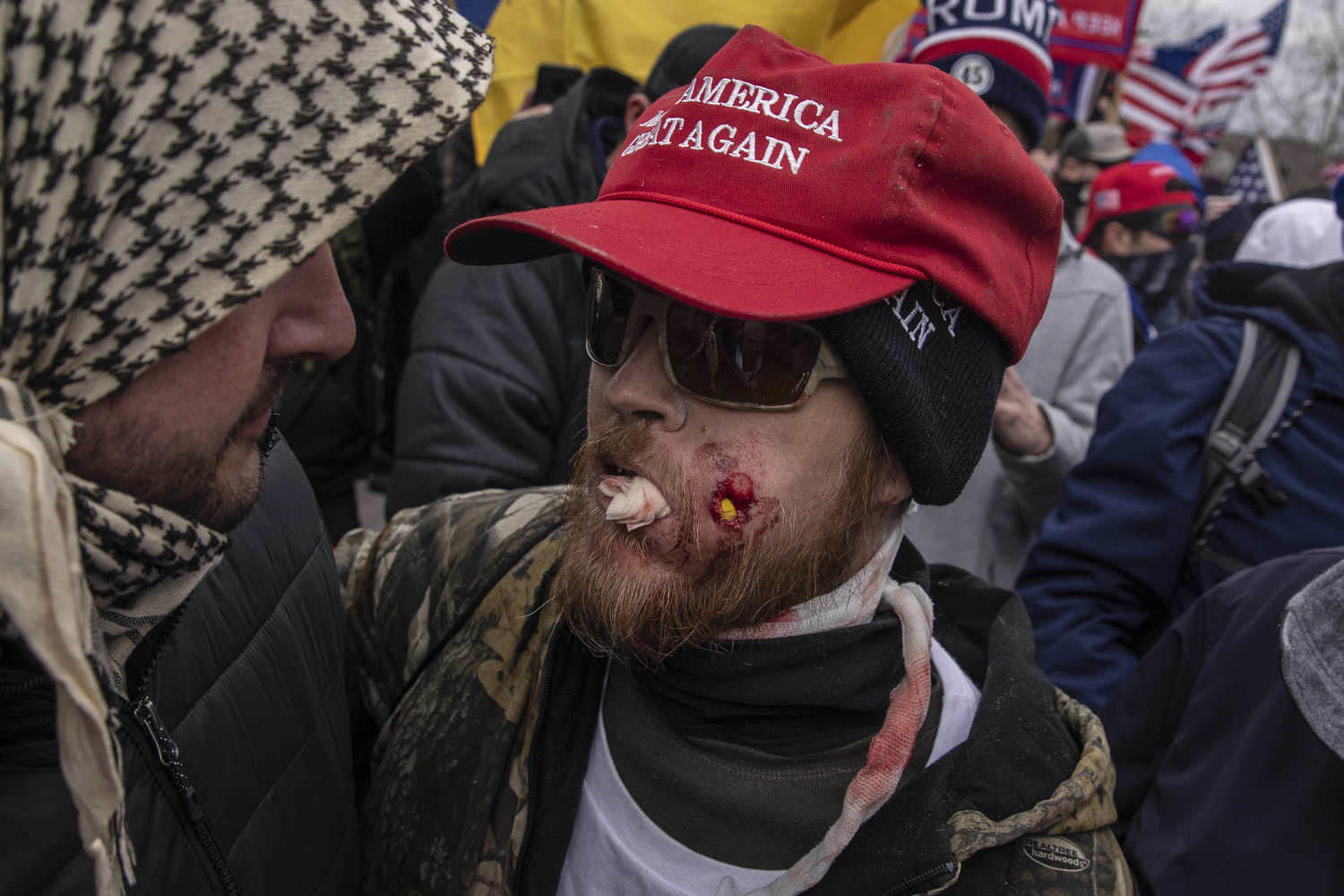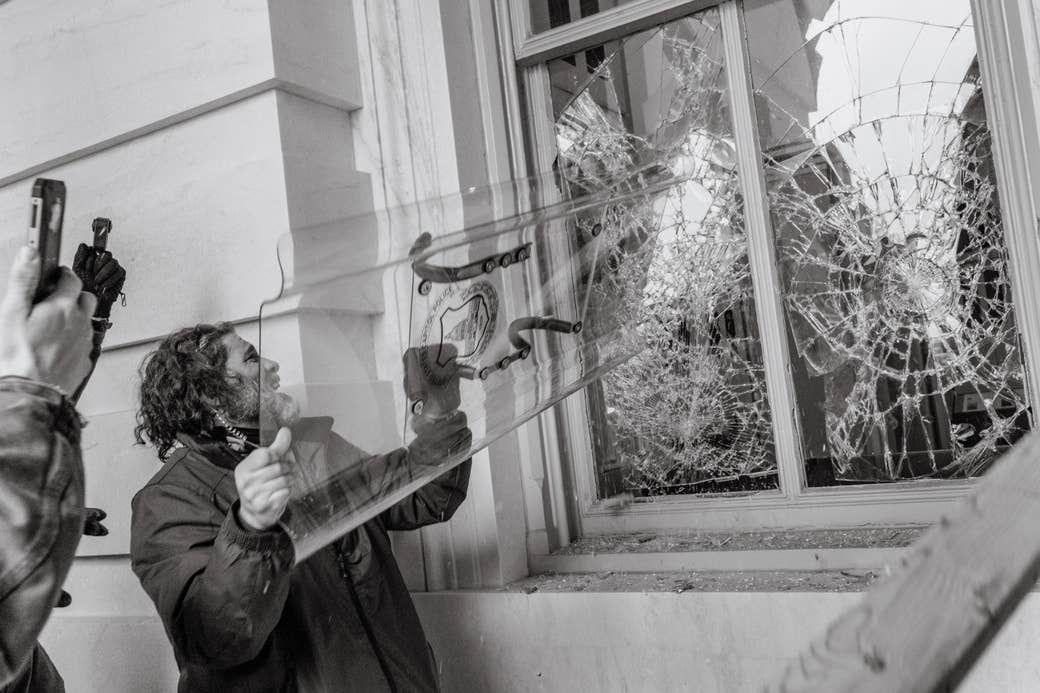
Like most people on Jan. 6, 2021, I was glued to my screen. I watched as the news of the riots at the Capitol played out on Twitter, on TV, in my group chats, and in my work Slack. The last year has been about understanding how the destructive event happened, why, and what happens next.
Cynthia Rivera has been the exhibitions manager at the Bronx Documentary Center for eight and a half years. Throughout Donald Trump’s presidency, she worked with photographers around the country on exhibitions related to issues that were central to the narrative in those four years — immigration, the climate crisis, and the “end of truth.” For Rivera, everything seemed connected: “We asked ourselves the question, is this a one-time event or is this a segue into something much bigger, much more chaotic, and the truth of what our democracy has become?”
On Jan. 6, as a mob attacked the Capitol and assaulted police officers, some photojournalists who had planned on covering Trump’s morning rally realized they were in for much more. Many photographers were there for the Capitol riot. No one knew exactly what was going to happen or that people were going to storm the building, but they had gotten word that something might go down that day. "The BDC spent a lot of time analyzing Trump's presidency, leading up to and during,” Rivera said. “It was a moment in history that seemed unreal, but we could also understand why this was happening and what led up to this moment.”
Christopher Lee was in Washington that day photographing for Time magazine. "There were a lot of photojournalists who were following the groundswell of conspiracy and anger. For me, it wasn't surprising, but it was shocking," he said. "For a person who has a lot of experience covering traumatic events abroad and the violence that people can inflict on each other, I had the privilege of stepping away from that when it got too dangerous or difficult. As a native Texan and someone who lives and works in Texas, that quiet chaos and that anxiety really followed me back home [after Jan. 6]." According to the Department of Justice, Texas constituted the second-highest number of people who were charged that day.
“It wasn't until a year after the insurrection, of information unraveling, that we were able to have a full view of what happened that day,” Rivera said.
We look at the exhibit, which opens in the Bronx later this month, one year after the riots.

